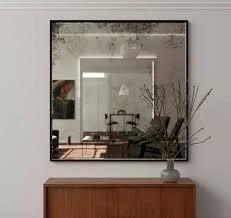

Exploring the Types of Low-E Glass
Low-emissivity (Low-E) glass has become increasingly popular in modern architecture and construction due to its energy efficiency and role in improving indoor comfort. The primary characteristic of Low-E glass is its special coating, which reflects infrared light, thus keeping heat inside in winter and outside in summer. As the demand for sustainable building materials grows, understanding the various types of Low-E glass has become essential for architects, builders, and homeowners alike.
What is Low-E Glass?
Low-E glass is treated with a microscopically thin metallic coating that allows natural light to pass through while reducing the amount of heat that is transferred. This coating reflects thermal radiation, allowing for better insulation and energy savings. Low-E glass comes in different types, each designed to serve specific purposes and performance requirements.
Types of Low-E Glass
1. Hard Coat Low-E Glass - Hard coat Low-E glass, also known as pyrolytic glass, is created by applying a thin layer of metal oxide to the glass surface during the manufacturing process. This type of coating is durable and can be treated with various glass processes, such as heat treatment. - Hard coat Low-E glass is effective for applications where high visible light transmission is required, making it suitable for buildings in colder climates. It provides excellent insulation while allowing passive solar heating, leading to lower energy costs.
2. Soft Coat Low-E Glass - Soft coat Low-E glass features a thin layer of silver or other metallic materials applied at low temperatures. This type of coating is more energy-efficient than hard coats as it has a lower emissivity rating. - Soft coat Low-E glass is often used in residential and commercial buildings, offering superior thermal insulation and UV protection. It enhances indoor comfort, minimizes fading of furnishings from sunlight, and can significantly reduce heating and cooling costs.

3. Low-E Insulating Glass Units (IGUs) - Insulating glass units consist of two or more layers of glass with a spacer filled with argon or krypton gas between them. Low-E coatings can be applied to one or more surfaces of the glass to optimize thermal performance. - Low-E IGUs are widely used in windows and curtain walls, providing excellent energy performance. They help maintain a consistent indoor temperature and reduce energy consumption for heating and cooling.
4. Spectrally Selective Low-E Glass - Spectrally selective Low-E glass is designed to control the heat and light entering a building. This type of glass selectively reflecting specific wavelengths of light means it can reject a substantial amount of solar heat while allowing high visible light transmission. - This glass is ideal for regions with high solar exposure, as it helps maintain comfortable indoor conditions without sacrificing natural light. Spectrally selective Low-E glass is popular in energy-efficient buildings where climate control and aesthetics are crucial.
Benefits of Low-E Glass
The advantages of Low-E glass extend beyond mere aesthetics. Here are some key benefits
- Energy Efficiency Low-E glass significantly reduces energy consumption by decreasing the need for heating and cooling, which helps in lowering utility bills. - Comfort By minimizing temperature fluctuations, Low-E glass provides a comfortable living environment year-round. - UV Protection The coatings block significant amounts of ultraviolet radiation, protecting interior furnishings, artwork, and flooring from fading. - Environmental Impact Using Low-E glass contributes to sustainable building practices, reducing greenhouse gas emissions associated with excessive energy use.
Conclusion
In conclusion, the various types of Low-E glass offer versatile solutions for energy-efficient building design. Whether it is hard coat, soft coat, insulating glass units, or spectrally selective types, each has unique properties suited for different applications. As the world moves toward greener building practices, the adoption of Low-E glass will play a pivotal role in enhancing the sustainability and comfort of our living spaces. Understanding these options equips homeowners and builders to make informed decisions that benefit both their wallets and the environment.